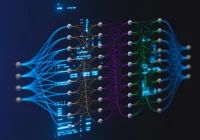Artificial Intelligence is transforming the European innovation ecosystem, with the demand for specialised and interdisciplinary skills growing, particularly across start-ups. The SkillSync platform, developed by the EIT AI Community, provides a comprehensive view of AI-related competencies across the start-up workforce, drawing on data from over 23,000 professionals in 3,600 companies. The findings highlight current strengths, identify gaps in skills development and explore regional disparities that influence Europe’s capacity to lead in AI innovation.
Skills Distribution and Sector Strengths
European AI start-ups demonstrate solid expertise in core technical domains such as Python programming, machine learning and database management. Roles including artificial intelligence engineer, data scientist and computer vision specialist rely on a foundation of programming, statistics and data analysis. By applying the ESCO taxonomy and a skill intensity metric, it is possible to map how embedded particular skills are across occupations and regions. High skill intensity values indicate regions with more professionals possessing specific expertise, enabling cross-regional comparisons and workforce benchmarking.
At the ESCO Level 2 classification, information and communication technologies dominate, followed by business, administration and law and working with computers. Other key categories include communication and creativity, management skills and natural sciences. These domains support both technical development and cross-functional collaboration, forming the backbone of AI-driven activities. General digital proficiency remains important, but skills associated with innovation performance extend beyond standard IT knowledge. High-value innovation correlates more strongly with scientific, engineering and healthcare-related skills than with baseline computing capabilities.
Training Ecosystem and Institutional Roles
Universities and non-university providers contribute complementary strengths to AI-related education. Universities tend to prioritise foundational and transferable skills, such as communication, statistics and project management. In contrast, non-university organisations focus on agile, industry-aligned training in areas like cybersecurity, Python and machine learning. Non-university providers exceed universities in the volume of courses covering specific AI-related skills, especially those tied to technical applications.
Despite this complementarity, notable gaps persist. Skills related to legal and regulatory frameworks, audiovisual technologies and domain-specific operations are often under-represented in both educational streams. The current training landscape does not fully meet evolving industry demands, and access to AI learning opportunities remains uneven. Women, older professionals and individuals without tertiary qualifications are under-represented in AI roles, raising concerns about inclusion and the digital divide.
Must Read: Investors Double Down on Healthcare AI Startups
Course offerings, filtered to include only those with a minimum duration of ten hours, reveal a dual emphasis on technical proficiency and business acumen. Key skills addressed include project management, communication, statistics and machine learning. University courses are strong in natural sciences and foundational knowledge, while non-university providers lead in delivering practical, market-responsive skills. This division underscores the importance of strengthening collaboration between academic institutions and alternative training platforms to offer more integrated and targeted upskilling.
Regional Disparities and Innovation Correlations
SkillSync data reveals clear regional disparities in workforce capabilities, which align with levels of innovation performance. Based on skill similarity, six regional clusters and two meta-clusters have been identified. Meta-cluster A includes regions from Western and Northern Europe, where skill sets are broad and include transversal, scientific and management capabilities. These regions consistently outperform others on the European Innovation Scoreboard.
Meta-cluster B includes Eastern and parts of Southern Europe, where the workforce is stronger in technical and operational skills but shows lower prevalence of soft skills, critical thinking and communication. This orientation may limit the capacity for innovation, despite technical readiness. Skills such as health and welfare, natural sciences, engineering and management are significantly more present in regions categorised as Innovation Leaders. In contrast, Emerging Innovators show low intensity in these domains.
A positive correlation exists between regional innovation scores and the presence of advanced, sector-specific skills. Skills in areas beyond basic IT—such as biotechnology, medical imaging or manufacturing—demonstrate the strongest alignment with high innovation output. Conversely, general programming or digital office skills contribute less to breakthrough innovation. These findings point to the importance of fostering advanced, interdisciplinary expertise tailored to sectoral applications.
European AI start-ups benefit from a well-developed base of technical skills, supported by a dynamic training ecosystem involving both academic and non-academic providers. However, gaps in regulatory knowledge, domain-specific expertise and inclusion remain. Regional disparities in skill composition mirror innovation outcomes, with high-performing regions characterised by broader and deeper skill profiles. Addressing these imbalances requires coordinated strategies that promote equitable access to AI-related education, enhance the responsiveness of training institutions and strengthen collaboration across regions
Source: EIT Health
Image Credit: iStock










